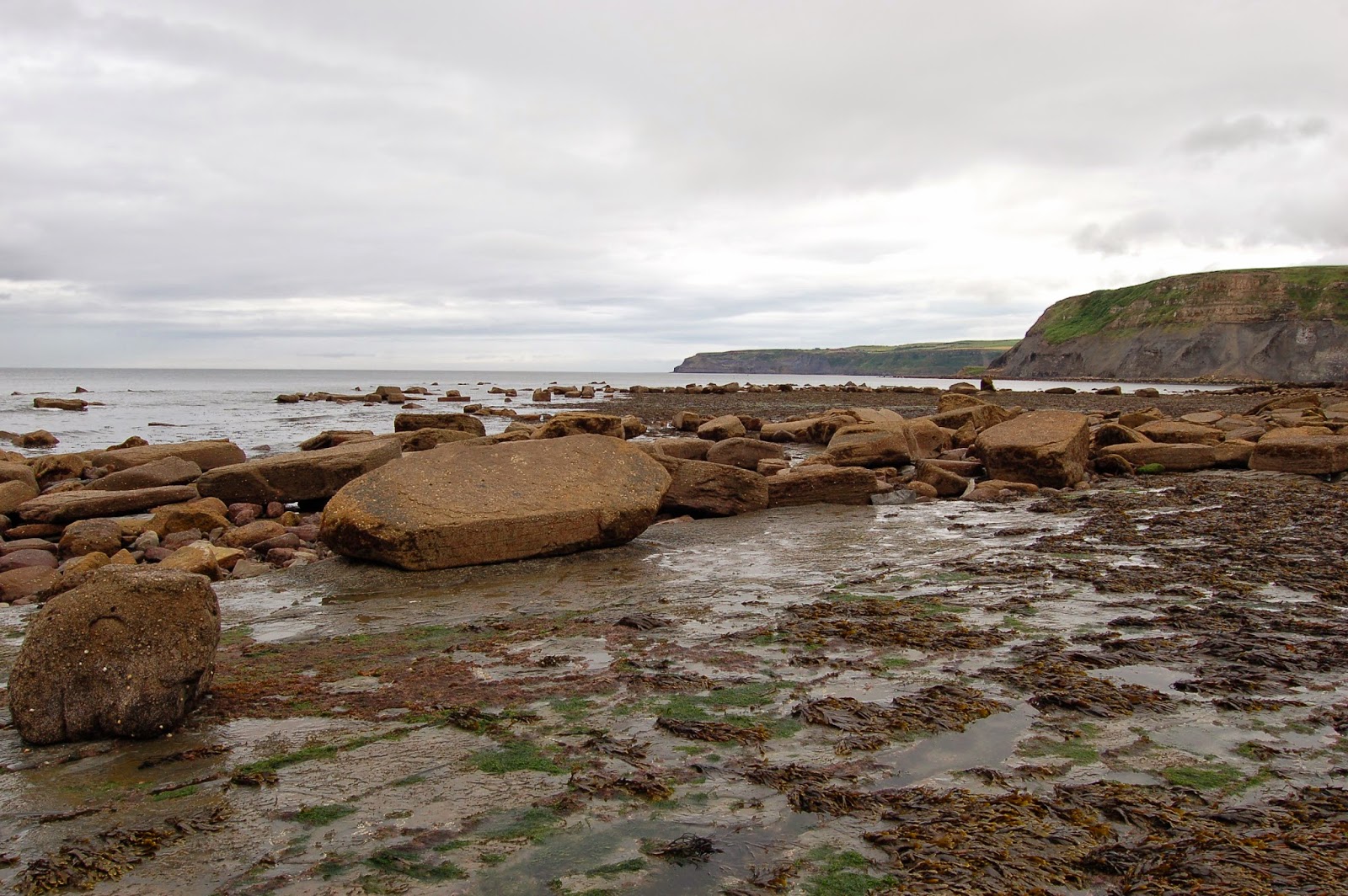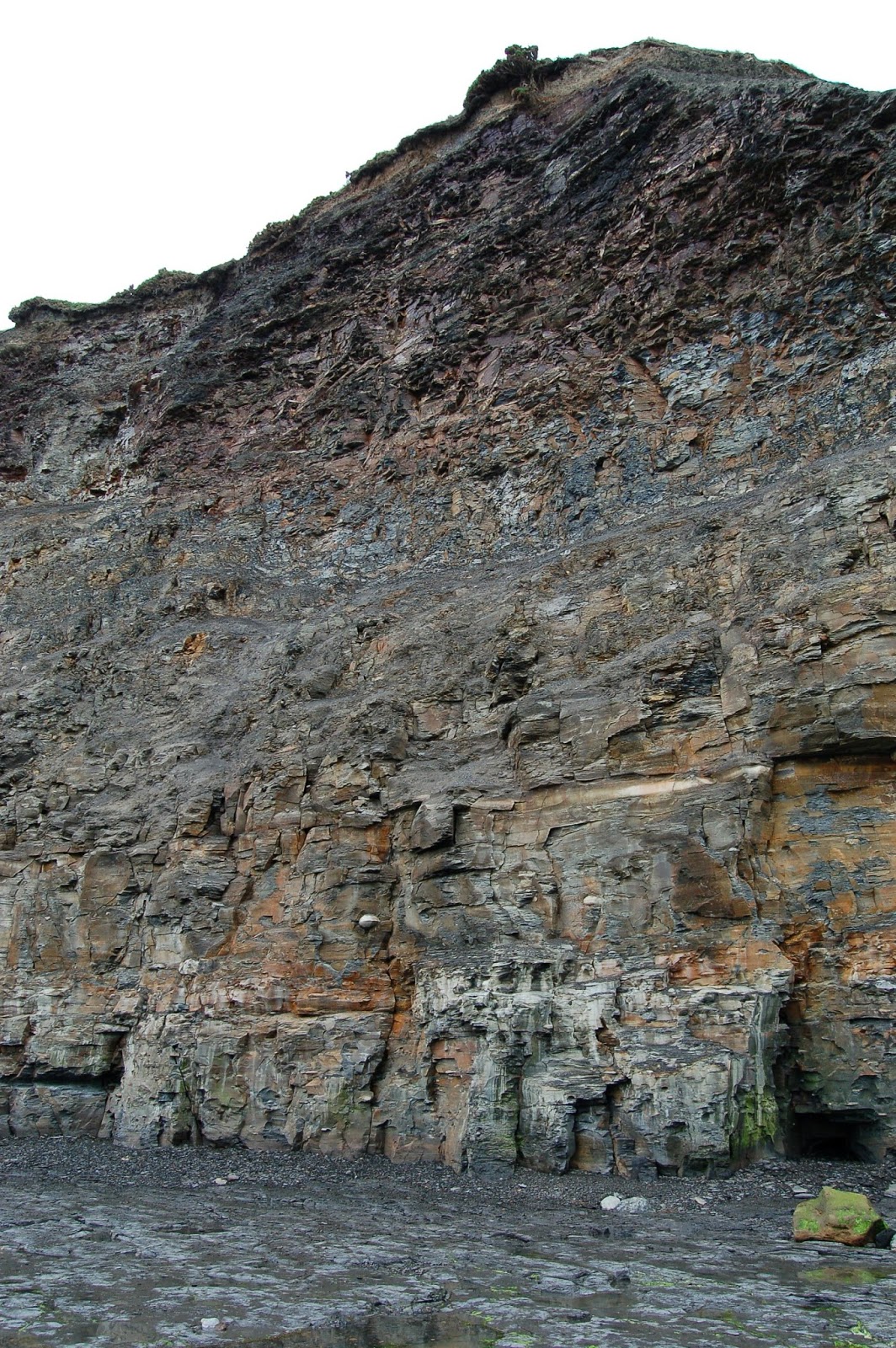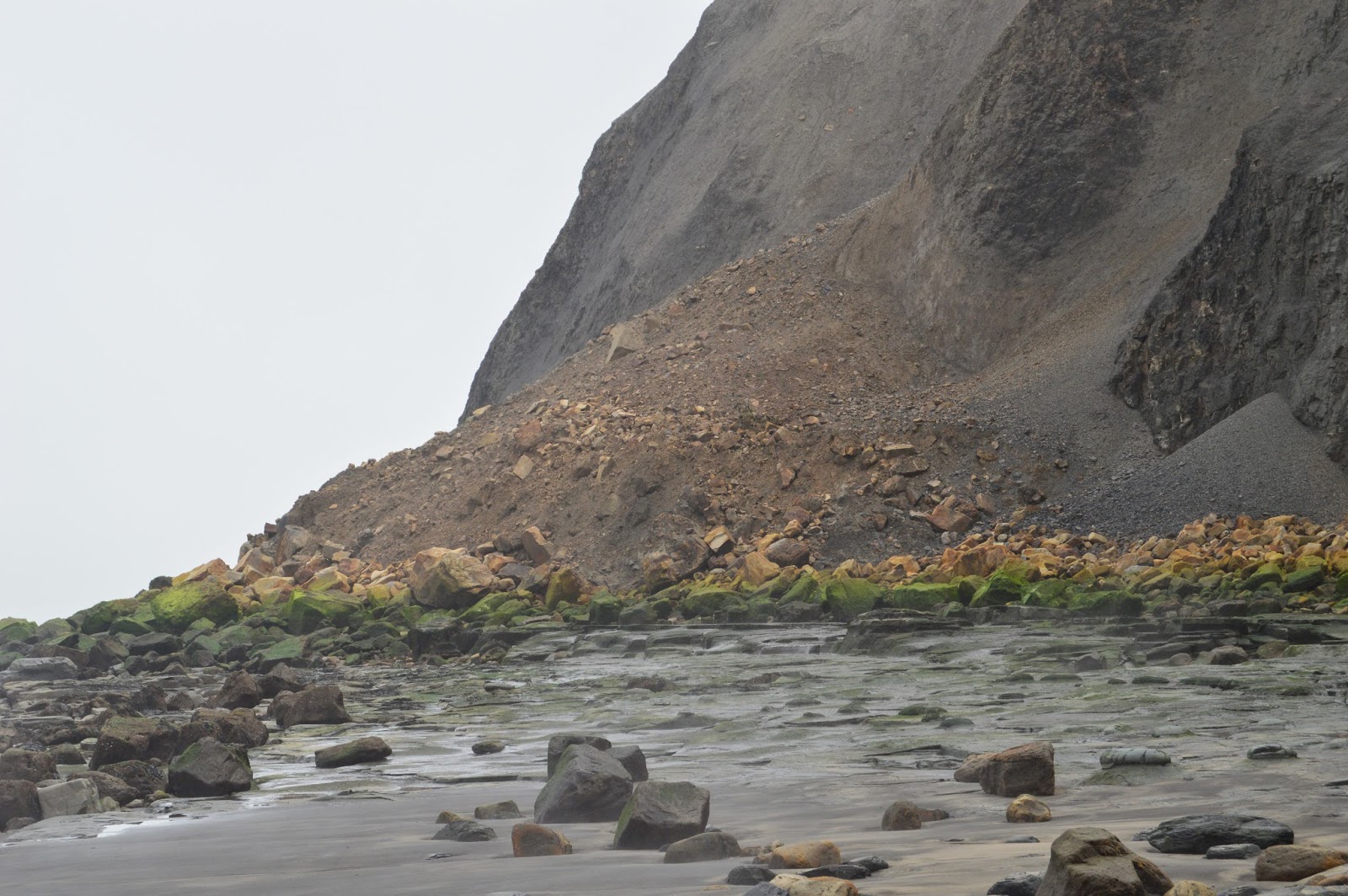| Online: | |
| Visits: | |
| Stories: |

| Story Views | |
| Now: | |
| Last Hour: | |
| Last 24 Hours: | |
| Total: | |
From the Toarcian to the Callovian Pt.1
Sunday, June 1, 2014 4:47
% of readers think this story is Fact. Add your two cents.
The next few posts are really a light review of some recent fieldwork that myself and some colleagues undertook at the back end of April into early May. Don’t expect a technical treatise here nor are there any earth shattering developments or reviews – rather this is a very personal, almost diary-like, look back at what was some very welcome respite from what has been a very hectic period since January. I hope you enjoy them.
At the back end of 2013 I had decided to plan a week’s fieldwork back in the north east to essentially chill out doing what I love but without the usual constraints of fieldwork and research under the auspices of our group. That does not mean I do not enjoy what we do but sometimes it is good to amble, looking for fossils as you go and smelling the hops along the way…..
So after Christmas I decided to look for accommodation in a fairly central location to the sites that I was quite keen to visit. I was fortunate that one of the first places I checked out was exactly where I wanted and looked ideal. I looked at the dates and settled for a late April excursion which appeared to me to be a fairly sensible time as it was after the Easter holidays and before summer really kicked in. Without further ado I booked the place up and I was all set.
Despite the fact I was booked to go on my own I let the other members of the group know of my plans and asked if anybody was interested in coming. It was unfortunate that so many members of the group were busy but in the end my colleagues Simon and Mark, from the Natural History Museum in London, said they would like to join me for the weekend and this was duly arranged.
Eventually it was time to go and soon I was winging my way up the A1 headed northward with a car full of gear – mainly field gear it has to be said. Is there anybody that does not take more gear than is needed when field work is about to start? To be fair, I have rationalised my gear a great deal now and take a largely reduced set of kit for prospecting these days although it has to be said that the heavy duty gear and other equipment needed for a larger excavation remain in the vehicle in reserve. Well you just never know and I would hate going into the field under prepared – hate it.
As journeys go it was about as hassle free as it could get and I arrived in Whitby at lunchtime and stopped to pick up a few supplies and then grab a drink and a bite to eat. I noticed that I had a message on my phone from Mark and when I listened to it I was surprised to hear that they were already in the field getting a sneak preview – surprised because I was expecting them much later in the day.
I rang him back but there was no answer so I left him a message and duly went for some refreshment as planned. Whitby was rammed with people and it was a struggle to get parked but I did manage it eventually and walked into the old harbour. As I looked around I realised I had arrived bang in the middle of one of the major Goth Festivals that Whitby hosts twice a year. It was a great atmosphere as so many Goths dressed in their darkest finery mixed with everyone chatting away and posing for photographs. I was really taken in by it – it was wonderful fun!
Eventually I caught up with Mark and Simon in Whitby and, as we sat down for a coffee, they told of their brief field trip – brief because the tide was almost in and they had to beat a hasty retreat before it was too late. But even in this brief period they told they had picked up a few fossils and so the prospects looked good.
At this point it might be worth pointing out our aims for the trip – there weren’t any! This may sound a little surprising since our group is concerned with the recovery and research of marine reptiles but this was really a case of getting away from the intensity of our routine work and actually enjoying some time out with the added bonus of a fossil or two. We were not expecting to find any vertebrate fossils but we would certainly be looking for them but we would also be collecting ammonites as well.
The ammonite fauna of the north east is well known and they are incredibly abundant – at the right times. The local collectors are fortunate that they can be instantly on the scene whenever there is a fresh cliff fall or when there are storm conditions or when the big autumnal and spring tides scour the Lower Lias platforms to reveal their hidden treasures. I don’t blame them – so would I if I lived locally and exactly the same thing takes place in that mecca of British fossil hunting – Lyme Regis and Charmouth.
But this should not put anybody off searching for fossils at these locations. The local collectors certainly do not get all the best fossils and, with ammonites, they are often only interested in nigh on perfect specimens and ignore or discard those that are not as near as possible perfect. So there should always be a few fossils to be found – provided we look in the right spots.
After we settled in to our accommodation, which was spacious, well equipped and comfortable, we spent the evening in one of the local inns where we ate and drank and discussed all things palaeo. As usual, all of the talk focussed on the fossils found during the past and those we might find in the future. Topics included further field trips, especially a couple of large scale affairs abroad, what we could do to increase the chances of unearthing more marine reptile remains and the importance of the public to palaeontology – watch this space!
Morning came and we set off early to make the most of the low tide. Our accommodation was situated rather well since we were only a matter of minutes from our first port of call. It had been raining and we were careful as we made our way down to the shore – conditions were very slippery. When we got to the bottom we headed north around some headland and aimed for some large boulders that were strewn across the shore since it was here that there was meant to be the chance of finding the odd bone and some fine ammonite specimens.
When I was last here there were lots of nooks and crannies that were holding areas for various rocks, nodules and fossils we collected some nice fairly intact nodules that clearly had ammonites inside them. But it was so different this time and it is no understatement that there were no nodules to find at all – indeed even ordinary rocks were conspicuous by their absence.
Just why this should be the case is not known. I suspect that there have been no recent cliff falls to replenish the foreshore and it looks to me that there must have been several scouring tides since even the sand was missing. In any event we discussed the issue and decided not to waste any more time in the north and we duly headed south to the spot where Mark and Simon had picked up a few fossils during the previous day.
As we walked along the shore we could see that there had been an extensive rock fall further around the headland. Even at a distance we could see a great yawning chasm in the side of the cliff and, at the base of the cliff, huge sandstone boulders piled up on top of each other with a mixed covering of clay, shale, ironstone and other scree. We would have to have a look at that shortly.
Eventually we arrived at the spot where the fossils were found previously. It was a stretch of shoreline that was strewn with a mixture of mudstone boulders, sandstone and all sorts of other rocks and pebbles all intermixed with sand – this was much more like it. Ahead of the shore the exposed wave cut platforms of the Lias stretched out before us of which the platform exposed higher up on the coastline was free from the sea weed that covered the vast majority of it elsewhere.
We began to search and instantly began to find fragments of ammonites of which some were heavily eroded and others were pristine. We naturally spread into a line of three – Mark at the top of the line, Simon in the middle and I took the base of the unit where the shore abuts the platform. Mark found a couple of likely nodules straight away of which one he found by turning a likely looking nodule over with his boot. As he turned it over he uttered that gasp of pleasure as, displayed before him, was a superb example of the ammonite Dactylioceras communewhich will clean up really well.
Encouraged by this we continued the search and we all found some nice examples. I was particularly struck how I managed to find three nodules that were exposed in one tight little section almost as if they had been placed there. As we progressed we decided to get a little pickier with what we collected since our collecting bags were starting to get a little heavy. As Mark and I continued to be engrossed Simon decided to push on and aimed for the rock fall zone determined to take a look.
After a while we looked up to where Simon was and we could see that he had already scaled the sandstone blocks and was busy looking through the spoil. Eventually Mark and I walked up to join him where we could see what had appeared to have happened. A lot of the sandstone was covered in seaweed which suggests the main fall must have happened some time ago but there had been a much more recent fall here which was evident by the amount of manmade quarrying mining there had been.
There were ammonite nodules in the shale and those that did not make the standard or had been damaged were left strewn all over the place. Simon had done well though and had managed to find a couple of decent specimens of which one looks particularly nice. Mark and I had a brief look although I felt that the two of us were not as comfortable as Simon was working in a spot which you could easily term as vulnerable to a further fall.
As we worked our way down and away from the rocks Simon decided to take a look on the other side of the rock fall to see what the exposures were like there. He soon bounded off, was very light on his feet and disappeared – “The Goat” Mark called him. While he was doing this we had a look at the wave cut platform below us while we could for the tide had turned. This platform is patchy as far as fossils go but we could see ammonites and belemnites in situ although these ammonites were nothing more than imprints but the belemnites were well preserved.
Eventually Simon caught up with us and suggested that the exposures on the other side were better accessed from the bay further south and so we formulated a plan to do that on the following day. It was now time to walk back with our spoils which was no mean feat. The climb out of this bay is one of the steepest you can encounter and we were really happy to make it to the top – good job we are all fit *cough*.
Soon it was time for food and drink and refining our plan for tomorrow because who knows what that might bring?
Source: http://saurian.blogspot.com/2014/06/from-toarcian-to-callovian-pt1.html






